Aquaponics is the science of aquaculture (the raising of edible fish) combined with hydroponics (growing vegetables and herbs without using soil). This revolutionary way of growing food has been making waves for quite some times, and per square foot, it’s the most productive form of agriculture on the planet. It is a great example of a living machine, which is a self-sufficient and is an artificial ecosystem for plants and animals, producing food for people without creating waste products or pollution.
Today Wonderful Engineering will guide you on how you can build your own Aquaponic system in your home!
Basic Components
Below is the list of components every aquaponic system must entail. Of course, this is a basic list and you can add further accessories in order to customize the system, depending on your particular circumstances and preferences.
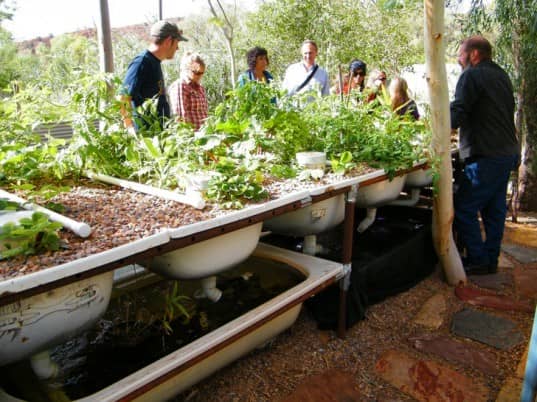
1) Tank
Most DIY entusaists use either a 55-gallon barrel or a 225-gallon square bin as a tank, as it can be easily obtained from the food industry. In theory, when your system is on full throttle, it should be able to support one pound of fish per gallon of water. But if you are just beginning, it’s better for your ecosystem and the fish if you stock one fish for every 10 gallons of water.
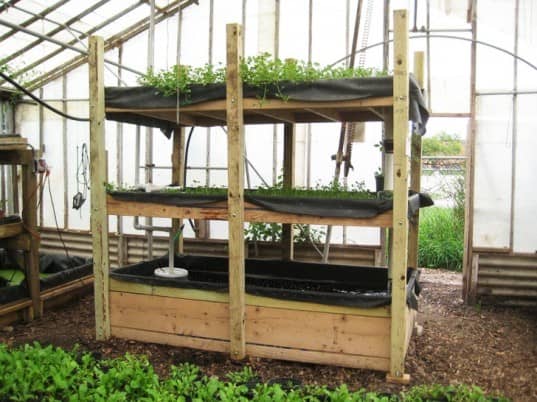
2) Grow Bed
As your growing bed will contain no soil, so you will need some type of water-resistant container to grow your vegetables and plants. Many commercial products are available, but you can also use a DIY approach and create a shallow wooden boxes which is about 6 to 10 inches deep. You can use it like ordinary raised beds for vegetables, and them line them with pond liner.
Each wooden bed should be with an inert growing medium as a substitute for soil such as perlite or fine gravel. Perlite has a advantage of being super light, but gravel is quite cheap in comparison; so you can choose as per your preferences. Coco coir is also a fancy growing medium readily available, and is popular for its ability to retain air and moisture for longer periods of time.
As a rule of the thumb, you can use ferti-gate area as large as 10 times the surface area of your fish tank.
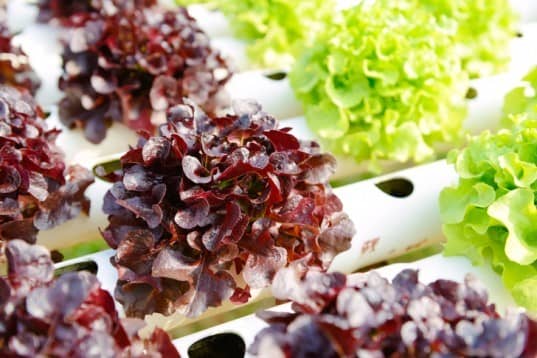
3) Pumps and Hardware
A pump is needed to circulate the water between the fish tank and the plantation bed to make the self-sustaining system go around. The reason why aquaponic systems are popular is due to the fact that you don’t need to ever change the water of the fish tank as the plants naturally clean them whereas you don’t need much artificial nutrients as the fish wastewater are the perfect fertilizer for most herbs and vegetables.
To make it absolutely self-sufficient, you can choose to install a solar powered aquaponic pump.
The installation of pumps can be tricky, so you can use the help of a professional for the plumbing needs. If the grow beds are below the tank, a pump can be used to collect the water that drains and put it back in the tank. Or if they are elevated above the tank, these pumps can be placed at the bottom and used to spread the water over the surface of the grow beds.
The beds also need a network of PVC pipes on the surface for the distribution of water. For that, you must drill ¼-inch holes every 6 inches in the pipe and place the pipes in parallel along the beds, each about 12 inches apart. For feeding the fish, you can install a seedling at each of the little holes.
Also create an aerator in order to provide sufficient oxygen for the fish.
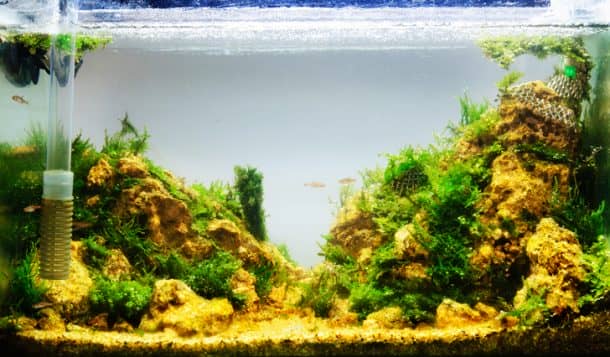
4) The Fish
Known for their tolerance of high stocking densities, ability to thrive in less-than-perfect water conditions, and a phenomenal growth rate, Tilapia are usually most commonly used in small-scale aquaculture systems. These fish are a tropical species, and require the water temperature to stay between 70 and 90 degrees for maximum health and growth. In correct conditions, they can reach a harvest-able size of one pound in 6 to 8 months! Thus in a temperate climate, you can harvest fingerlings in May and then feed on them in October.
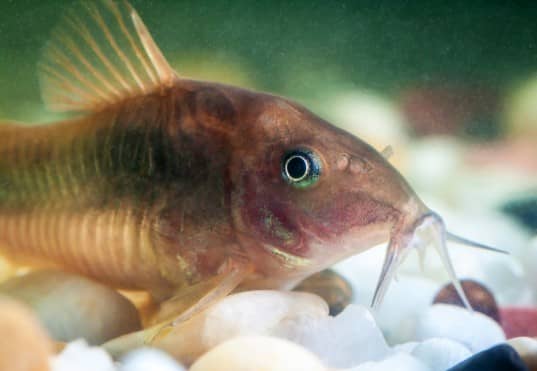
5) The Plants
As found by experience, any plant with leaves such as lettuce, kale, arugula, spinach, basil, dill, etc. grow very well feeding on the nutrients found in fish water. Other vegetables like and like tomatoes, cucumbers and zucchini can also be grown, but these require supplemental fertilizers, easily available from hydroponic suppliers. You can also cultivate several species of fruit, such as blueberries, strawberries, raspberries, etc. using the same fertilizers.
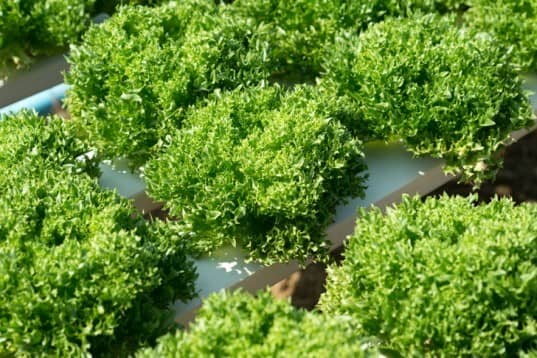
6) Putting a System Together
Find a flat, sunny space for your aquaponics system. If you are building without any artificial temperature control, try to get everything together in early spring, so that you can be ready to stock the fish as soon as the temperature hits 70 degrees. The process of stocking the fingerlings and starting seedlings in flats should be simultaneously started. By doing so, your fish would be producing enough waste to support the growth of the seedlings when they are big enough to be transplanted. The water circulation is necessary at all times, since the growing medium cleans the water and keeps it livable for the fish.
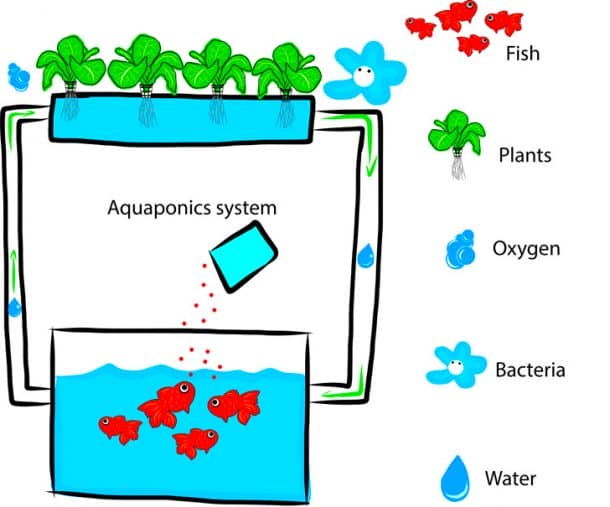
7) Management and Fine-Tuning
Some other small yet important things to remember include keeping your aerator running 24/7 to provide oxygen to the fish. The pump should be put on a timer so that it can go on and off at regular intervals. This is necessary for the health of your fish, and also to make sure your growing medium isn’t excessively wet all the time.
The fish should never be overfed, and typically they should be given as much food as they can consume in 20 minutes, three times a day. You can also use automatic feeders for this purpose. Avoid overstocking the fish at first. Start with a simple system, and you have an established routine that works for you, only then look to expand it system.
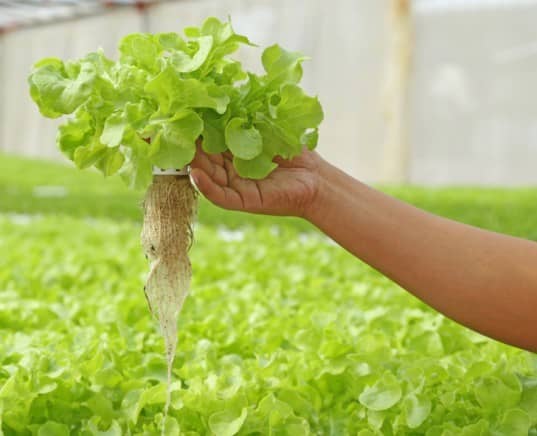
Do you have any other tips for creating a healthy and self-sustaining aquaponic system!
We’ll love to hear your ideas in the comments’ section below!


